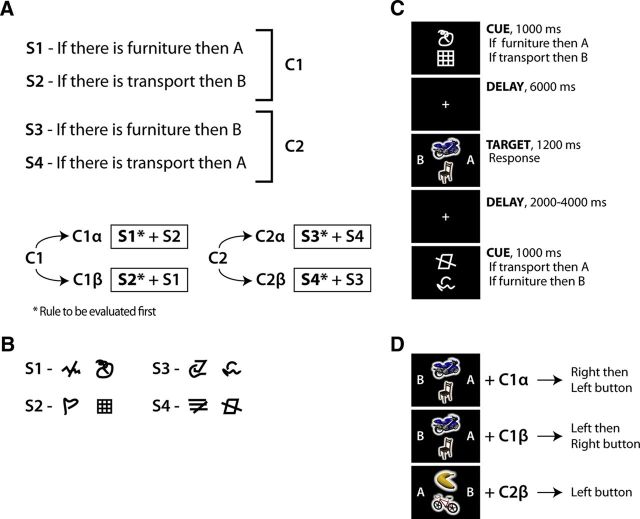Figure 1.
Schema of the experimental paradigm. A, Experimental rules used in the paradigm: four different single rules (S1–S4) were combined in two experimental compound rules (C1, C2) and four catch compound rules (C3–C6; Table 1). Furthermore, two alternative orders were implemented for each compound rule, thereby generating four different experimental rule sets (C1α, C1β, C2α, C2β) and eight catch rule sets (Table 1). B, Each of the four single rules used in the experiment were associated with two visual cues. The resulting redundancy of the cue code made it possible to disentangle visual features of the cues from their meaning (i.e., the rule). C, Timeline of the experiment. At the beginning of each trial, two cues were presented. The cues informed the participants which compound rule had to be applied in the current trial. The top cue always coded the rule to be evaluated first. A delay of 6 s followed cue presentation. A fixation cross was shown during delay. After the delay, the target image was presented. Participants had to apply the active rules to the target stimuli and derive as fast as possible which symbols to choose (A, B, or both) and in which order (AB or BA, in case both symbols had to be chosen). After having chosen the symbol(s), the participants had to press the right, left, or both buttons, depending on the position of the relevant symbols on the target screen. The short time available during target presentation forced the participants to retrieve and represent the relevant rule set as soon as the cue was presented. Following target presentation and before the succeeding trial, a blank screen was presented for a variable time. D, Examples of correct answers given a specific target screen and an active rule set. In the first two cases only the rule order changes.

